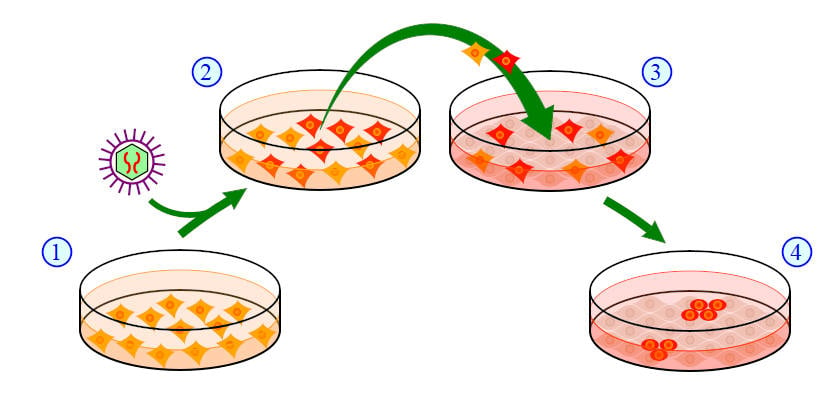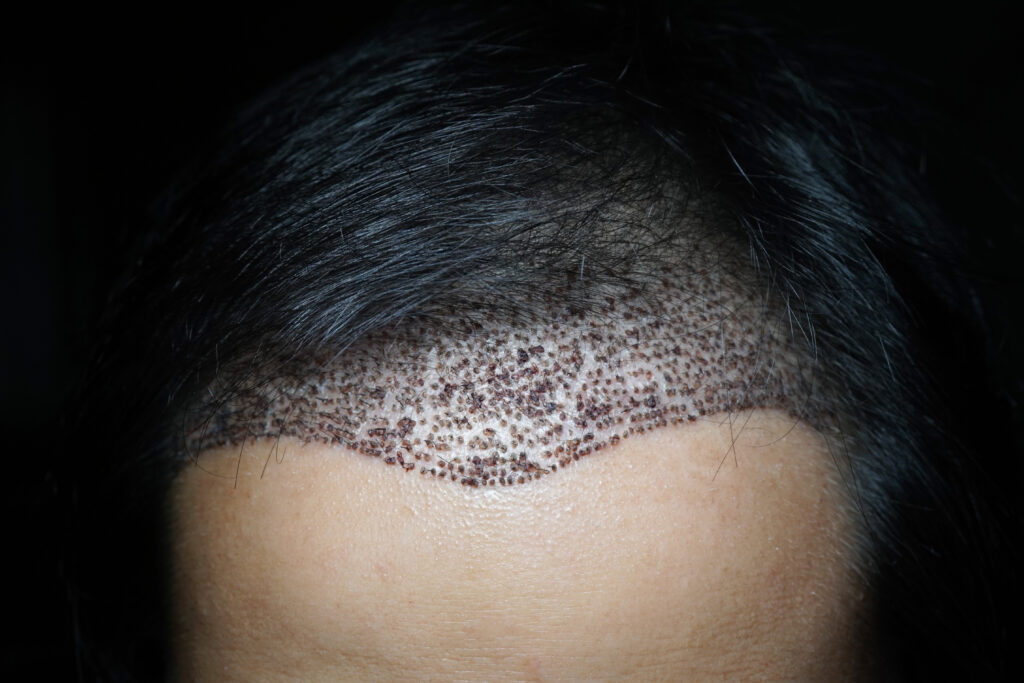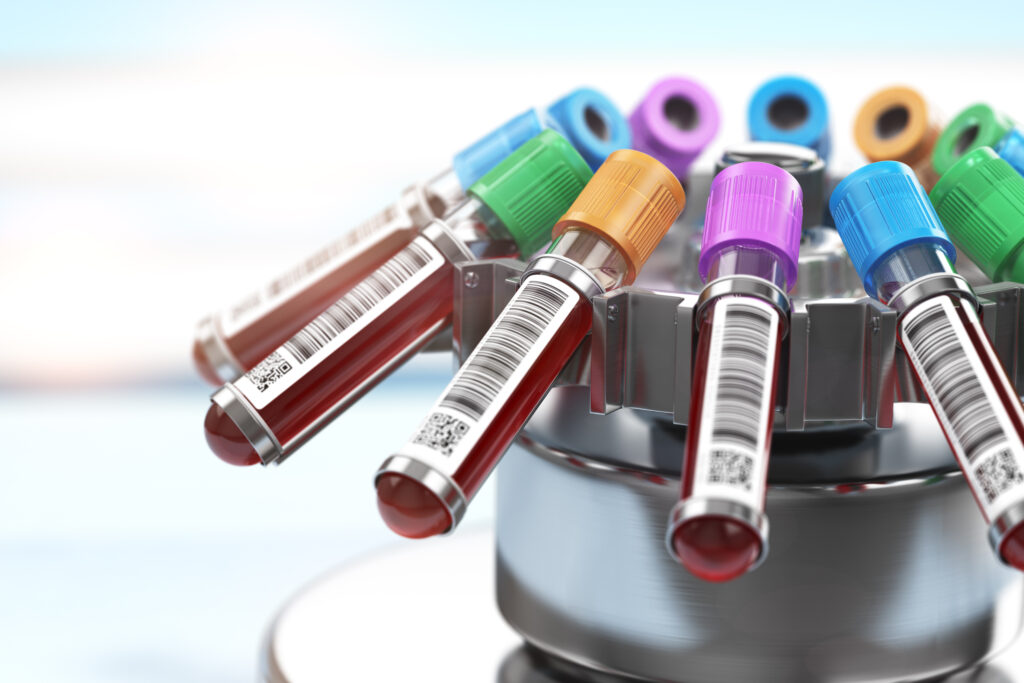
What is a Stem Cell Hair Transplant?
New technologies are constantly being researched in the field of hair transplantation. One of the most exciting developments to combat balding is stem cell hair treatment.
Using cutting edge techniques, a new method for regrowing lost hair may be on the horizon using different types of stem cells. Find out more about the possibilities of stem cell hair treatments below.
Summary
- What are Stem Cells?
- What is the Procedure for Stem Cell Transplants?
- What are the Benefits of Stem Cell Hair Treatment?
- Is Stem Cell Hair Treatment Soon a Possibility?
What are Stem Cells?
In the area of medical technologies stem cells have been revolutionary in helping to treat a range of illnesses. This is due to their properties whereby they are able to develop into different cell types in the body. By dividing and renewing, the stem cells can turn into specialised cells which can replace damaged tissues in the body.
How Can They Be Used for Hair Growth?

Using these techniques, studies have shown that stem cells can be used to create new hair follicles by replicating healthy ones and implanting them back into the scalp area. The versatility of stem cells means that they could be taken not only from hair follicles for this purpose but also from other places in the body. Adipose tissue from body fat has been used to create a different type of cells in order to regrow damaged hair for example.
The stem cells can be applied to a variety of hair problems from helping to make weak hair follicles stronger again to reactivating older follicles which are left in the resting phase. Not only this but the stem cell therapies can aid in hair restoration even from where the follicles have scarred.
What is the Procedure for Stem Cell Transplants?
The transplant begins with what’s known as a punch biopsy in order to extract the stem cells. Using a circular blade, a cylindrical sample of tissue is removed after being rotated into the skin. In order to separate the stem cells from the tissue they are placed in a centrifuge whereby they are spun quickly to create a cell suspension.
The stem cells are then injected back into the scalp to treat the affected area of hair loss. In order to stop any bacterial infections, patients are prescribed antibiotics 48 hours before the procedure and continue to take them a week after the stem cell hair transplant.
What are the Benefits of Stem Cell Hair Treatment?

Following the procedure there’s no recovery time required. While there may be some pain and excessive exercise should be avoided for a week, you can resume day to day activities quickly. There may be some minor temporary scarring where the skin tissue has been removed. As the hair follicles have not been taken directly there is no uneven hair growth from the donor area.
The success rate in studies shows about a 30% increase in hair density after just 6 months. The simple procedure has no lasting or damaging effects with documented results highlighting the benefits of the procedure and speedy recovery.
There is great potential for applications with hair loss where there has been scarring over the follicles preventing future growth. Here healthy hair follicles aren’t needed from the donor area at the back or side of the head. Therefore patients with severe conditions like alopecia universalis or alopecia totalis have the possibility to be treated where a traditional hair transplant may not be available.
Is Stem Cell Hair Treatment Soon a Possibility?
While there have been successful stem cell hair treatments since 2017, there are still tests that are being undertaken to ensure the safety and viability of the procedure. Due to the ongoing research clinics aren’t able to guarantee a successful result. Results can vary depending on the patient and may require multiple treatments over the course of months to provide full coverage of the affected area.
For now, the follicular unit extraction (FUE) method is the most reliable and effective method for hair transplantation. Here the grafts are loosened using a hollow needle before being carefully removed with a high level of precision.
With NEO FUE, Elithair is able to increase the effectiveness of this procedure by enriching the donor and recipient areas with a growth serum prior to the hair transplant. This improves the strength and health of the hair follicles which grow following implantation.
Additionally as there are not a lot of clinics offering stem cell treatments the cost is also much higher. Our competitive rates provide the best value for money while ensuring a fantastic result thanks to the expertise of our hair transplant team.
FAQ
How long does a stem cell hair transplant procedure take?
The procedure typically takes several hours, depending on the extent of hair loss and the number of stem cells needed.
Are there any risks or side effects associated with stem cell hair transplants?
Common side effects include minor pain, swelling, and temporary scarring. Serious complications are rare, but may include infection or allergic reactions. The procedure, however, has not yet been approved by the NHS or the FDA.
How long do the results of a stem cell hair transplant last?
Like with “conventional” hair surgeries, results can last for many years. Follow-up treatments may be necessary to maintain hair density and growth.
Who is an ideal candidate for stem cell hair transplant?
Ideal candidates are individuals with mild to moderate hair loss who have not responded well to other treatments. Those with certain medical conditions or severe hair loss may not be suitable candidates.
What is the cost of a stem cell hair transplant compared to traditional methods?
Stem cell hair transplants are generally more expensive than traditional methods due to the advanced technology and procedures involved. Costs vary depending on the clinic and the extent of treatment needed.
How do stem cell hair transplants compare with other advanced techniques like PRP?
Stem cell hair transplants can offer more significant and longer-lasting results compared to PRP (Platelet-Rich Plasma) treatments, which typically require multiple sessions and maintenance treatments.
What is the recovery process like after a stem cell hair transplant?
As with other types of hair surgeries, recovery is relatively quick, with most patients resuming normal activities within a few days. It’s advised to avoid strenuous activities and follow aftercare instructions to ensure optimal healing.
How do stem cells promote hair growth at the cellular level?
Stem cells stimulate the growth of new hair follicles by differentiating into the necessary cell types and releasing growth factors that enhance the regeneration of hair tissues


